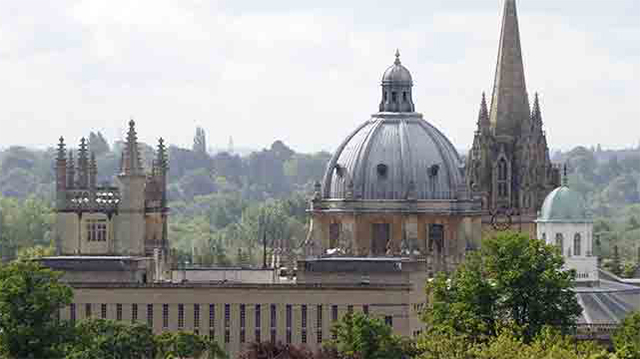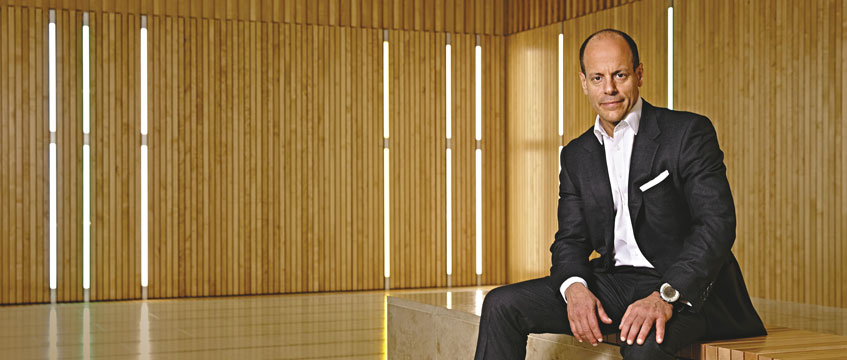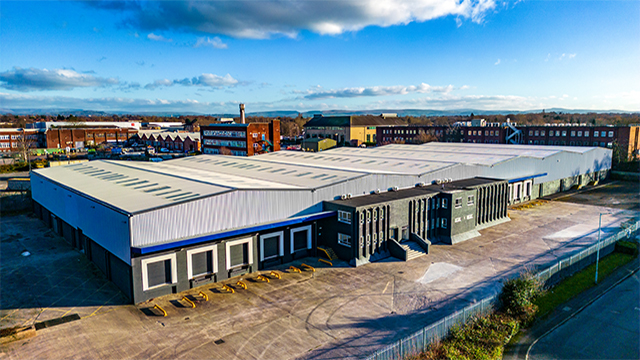by Jonathan Harris
Central to Soho and Portland’s positioning as acceptable office locations has been the locational loyalty placed in them by their key tenant groups: media and fashion respectively. However, competition from the more traditional commercial office markets of the City on the one side and Mayfair on the other has taken its toll. Equally damaging during the past 18 months has been the burden of high interest rates, the effect of the Uniform Business Rate and a nervous investment sector, all of which have combined to dampen rental growth. Add to that oversupply of as much as 3m sq ft, falling demand and the threat of further competition as ambitious City and West End development schemes offload supply and the three-year rise of Soho and Portland is called into question.
Whether they are magazine editors, PR executives, advertising agency bosses or restaurateurs, their enthusiasm for the area is the same. “Soho is a very special part of London,” typifies the attitude. So does: “It’s one of the few areas which has retained its charm while keeping a degree of commercial common sense. It’s important for the general trading atmosphere that the interesting mix of businesses continues to operate.”
Portland is also bathed in locational praise. Radio broadcaster Libby Purves, for instance, finds it easy to reach by public transport, with atmosphere and every possible shop you could wish for within two minutes’ walk. She even admits to feeling “quite desperate” if the BBC ever moved away from Portland Place.
Tenant reaction has never been so critical to the areas’ success as it is now. Locational loyalty is under pressure and, as price sensitivity versus quality of accommodation becomes the issue of the day, some of Soho’s and Portland’s less traditional occupiers — banks and insurance companies, for instance — are being tempted to the City, Docklands and fringe locations by greatly reduced rental levels. Even key tenant groups are taking stock of the opportunities now on offer. Advertising agencies Bartle Bogle Hegarty and Grey Advertising are considering a move; the latter, rumoured to have considered Canary Wharf, are now looking at sites south of the river.
With their decision to relocate, companies have to reconcile any cost advantage with a fall in immediate environment. Gill Hudson, editor of New Woman and tenant at 48 Leicester Square, notes: “Location is a big plus. Here, right in the middle of media land, I have everything I need at my fingertips.” Fellow tenant Alan Joy of Syntex regards transport and staff comfort as major factors. “Our workforce travel in from as far afield as Brighton and Colchester, so communication links have to be excellent. Amenities such as theatres, shops and restaurants also featured in our decision to move here, particularly from a staff point of view. They like to be here.”
One of the more reliable indicators of tenant demand is the nature and pace of new lettings. The level of ingoing tenants in 1990 was on a par with the previous year, while the profile of occupiers taking space continued to follow tradition, ie companies operating in design, media and professional services. In Broadwick Street, Soho, for instance, 20,000 sq ft was let to Warner Brothers at nos 20-24 for £47.50 per sq ft and, in Portland, solicitors Feiners took 20,000 sq ft at 179-185 Great Portland Street at £42.40 per sq ft.
In the 1980s rents in Soho and Portland rose dramatically, reflecting the areas’ improved perception as office locations. Both areas also benefited from Westminster council’s strict control over demolition and designation of conservation areas; Soho particularly gained from Westminster’s crackdown on vice. Their resulting fresh image spurred new development and investment, boosting average achieved rents from £26 to £42 in Soho and £28 to £35 in Portland between 1988 and 1990, putting Soho on a par with the City.
The highest achieved rent in Soho last year occurred in Golden Square, where a 2,315-sq ft unit at no 33 was let to Merlin Gerlin, a computer and telecommunications company, for £52.50 per sq ft. However, rental levels generally saw a marked slowdown over the year, with Portland witnessing virtually no growth at all.
Forced down by oversupply and the economic downturn, rental levels currently range to a high of £37.50 in Soho and £35 in Portland. This compares with £52.50 to £45 respectively for the same period last year.
Demand in 1991 has taken a tumble, premiums are historic and empty property a liability. Currently, Soho has 525,000 sq ft of unoccupied space on the market, while in Portland the figure is 1.15m sq ft. Just as tenants have reappraised their commitment to the areas, investors and developers have also redressed the balance.
No longer regarded as a secondary location for offices, the late 1980s saw tremendous activity, with property investment companies, financial institutions and developers forming the mainstay of ownership distribution.
Priest Marians became a major holder of Portland property, acquiring the Langham Estate — comprising some 179 freehold properties — from British Waterways Superannuation Fund. Great Portland Estates also have sizeable holdings in the area, including Kent House, Market Place and 158-176 Great Portland Street. London Merchant Securities also own a considerable portfolio in Charlotte Street and the surrounding area.
In Soho, one of the area’s older landowners, the Sutton Settled Estate, divested itself of a substantial portfolio, including property in Beak Street and Great Pulteney Street, to Dixons. BP Pension Fund sold an island site on the south side of Golden Square to C & J Clarke, and Wereldhave (Peachey) were also active in developing their large stake in Soho, which included the Carnaby Street Estate.
Since 1989, however, there has been net institutional disinvestment in offices — a trend which reflects the absence of the UK investor, especially during the past three years. In Portland there has been considerable trading. In the main trading year of 1987 nearly 270,000 sq ft of space was sold by institutions, but some 200,000 sq ft was also bought. By contrast, very little space was purchased in Soho, so that continued selling reduced the level of institutional holdings in 1989 to less than 40% of their 1985 volume.
High interest rates during the past 18 months have made property less attractive and much of the evidence underpinning the area’s investment markets relates to better times. This slowdown in investment, coupled with the emerging pattern of oversupply and falling demand, has severely tested the market and put capital values under further pressure. Currently, however, there are encouraging signs of renewed interest, which indicates that the investment market may have bottomed out.
At present, within Soho and Portland there are 97 schemes in the development pipeline which will provide more than 2.5m sq ft of future office space. Half the schemes are new and the second largest category, major refurbishment, has been spurred by the constant pressure on developers to realise maximum usable floorspace; the effect of the relaxation of the 1987 Use Classes Order which liberated more space for B1 office accommodation; conservation criteria, particularly in Soho; and the spiralling need to upgrade basically sound modern offices owing to competition from recent new developments. The “new behind facade” category has also increased in importance, almost doubling over the past year. Examples include Stancia’s 150,000-sq ft revolving refurbishment of 48 Leicester Square, Lynton’s new office scheme on Broadwick Street of 35,000 sq ft, Imry’s major development at 10-12 Great Marlborough Street of 60,000 sq ft and the proposed scheme at 90-100 Wardour Street which will provide a further 65,000 sq ft.
By the end of June 1991 it is expected that 235,000 sq ft of office space will be added to the stock. This figure is some 50% down on the same time last year, which points to a turning-off of the supply tap. The recent postponement of Norwich Union’s planned development of 25 Soho Square provides yet further confirmation of the development fall out.
Notable among the schemes which are due to complete this year, however, are 70,000 sq ft at The Trocadero being developed by Brent Walker; Finlan’s 32,899-sq ft development of 9-14 Windmill Street and Stancia’s scheme at 48 Leicester Square.
Clearly, Soho and Portland have not escaped the effects of the general downturn in the London office market. Of the two, Soho appears to be the stronger, as demonstrated by the increase in rents during the 1980s. This, combined with a relatively limited supply owing to the comparatively small unit size of Soho properties, should ensure that the area is well placed to take advantage of an eventual upturn in the market.
Portland has not experienced either major development or improvement in popularity. I believe it will continue to follow the peaks and troughs of the wider market, depending on the overspill of demand from surrounding areas.
In conclusion, each of the two areas is experiencing decline. The key questions concern the depth and extent of this downturn. In the short term, prospects for the areas do not compare favourably with those which they enjoyed over the three-year period peaking in 1988. However, there is light at the end of the tunnel and I predict that we will see a noticeable upturn during 1992. Inevitably, when there is over-supply in the market-place it has a depressing effect, but once the upturn starts to gain momentum, historically the take-up of slack has always been faster than expected.










